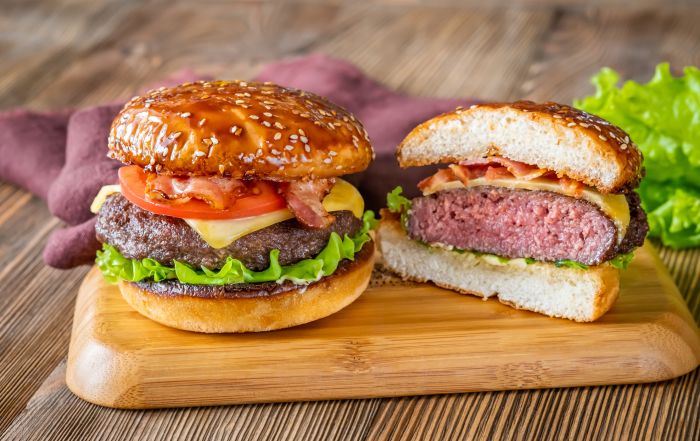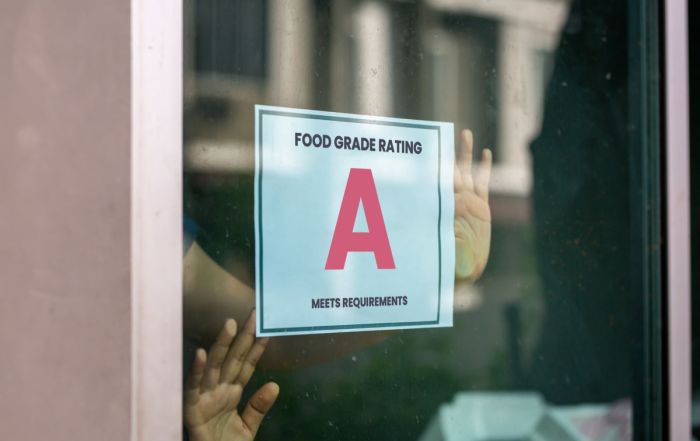Navigating the Intricacies of Temperature Management
I spend a bit of time in these blogs discussing various nuances of food safety – but one that we haven’t spent much time discussing is basic temperature management. I think we all, at least I certainly do, take this knowledge for granted after having been exposed to it for so long. Can you imagine a new hire coming to work in a commercial kitchen for the first time and how confusing all the temperatures we use on a daily basis must be for them?
Temperature management is not just a matter of achieving the perfect doneness in a steak or ensuring a refreshing chill in your salad. It really is a critical factor in safeguarding the health and well-being of anyone who partakes in the creations of a foodservice operation.
At the heart of temperature management is the division between hot and cold, each playing a crucial role in preventing the proliferation of harmful microorganism. The 2022 Model Food Code sets forth specific temperature ranges that food items must be stored, cooked, and held within to minimize the risk of foodborne illnesses. I am basing the rest of my discussion within this blog on that standard. As always, it is important that you check the standards within your local jurisdiction as they could be slightly different than what the food code has recommended.
Navigating the intricacies of proper temperature control means not only understanding the recommended temperature guidelines, but also implementing best practices in a dynamic and often hectic kitchen environment.
Hot Holding: The magic number here is 135°F (57°C) or higher. Foods like soups, stews, and cooked meats should be maintained at this temperature or above to prevent the growth of dangerous bacteria such as Salmonella and E. coli.
Cold Storage: On the flip side, the chill zone is equally significant. Cold storage, below 41°F (5°C), is vital for perishable foods like dairy, raw meats, and ready-to-eat items. Maintaining these items at the right temperature ensures the slowdown of bacterial growth.
The zone in between the cold and hot zone, or between 41°F (5°C) and 135°F (57°C) is what we have called the temperature danger zone for years. This zone is the sweet spot for microorganisms to multiple, the temperature at which food should spend as little time as possible.
Cooking Temperatures: When it comes to cooking, temperatures are not just about achieving the ideal taste and texture; they are about ensuring that the food is safe to eat. Poultry, ground meats, and fish have specific temperature thresholds that must be reached to eliminate harmful bacteria. For instance, raw eggs prepared for immediate service should reach 145°F (63°C) poultry should reach an internal temperature of 165°F (74°C), while ground meats and fish should hit 160°F (71°C).
Implementing these temperature management practices in a fast-paced kitchen is no small feat. Chefs and kitchen staff must be adept at multitasking, ensuring that food moves seamlessly through temperature transitions from storage to preparation to cooking and, ultimately, to serving.
The challenges with temperature control are now confounded more than ever with the demand for food delivery and the proliferation of delivery services such as Uber Eats and Grub Hub. Maintaining the correct temperatures during transportation presents an additional hurdle that requires careful consideration and innovation.
Navigating the intricacies of proper temperature control means not only understanding the recommended temperature guidelines, but also implementing best practices in a dynamic and often hectic kitchen environment. From the storage of ingredients to the final presentation on the plate, each step can have a different temperature requirement which must be met to ensure the food served is not only delicious but, more importantly, safe for every guest. Risk Nothing.
READ MORE POSTS
Embracing Technology for Enhanced Food Safety in Foodservice Operations
Technology. We love it, we hate it. I’ve always been fascinated by technology; I remember getting my first Blackberry in the mid-90s and thinking it was the pinnacle of technological advances. Before that, I remember ordering a dictation program in college that was going to revolutionize the way I “typed” my assignments. Looking back, it really wasn’t worth the box that the program came in. Now, we have ChatGPT that will write the entire paper for us!
Meat Color and Doneness: Persistent Pinking
Late in June, my family and I were able to visit the Black Hills, an area of the country in which I have not had the opportunity to spend much time. One evening, as we dined at a local restaurant, I observed a table across the dining room sending back a dinner. While I couldn’t hear the entire conversation and I certainly wasn’t trying to eavesdrop, it was apparent that the customer was unhappy with the cooking of their hamburger and was sending it back because it was too pink in the middle. That immediately brought to my mind the phenomenon known as persistent pinking. A term I became familiar with because of work done by some colleagues here at Kansas State, which they present each summer to a group of foodservice operators who join us on-campus for an in-depth week-long look at all things food safety.
Quat Binding – Why this Can Have a Disastrous Impact on Your Sanitation Program.
In June, I had the opportunity to represent FoodHandler and speak on food safety behavior for customers of Martin Bros. Distributing in Waterloo, Iowa. One of the questions that was asked caught me a little off guard. The question was about quat binding. It caught me off guard not because it was a bad question, but only because it was not something I had previously been asked nor had not yet been exposed to the phenomenon. However, I soon learned that in certain jurisdictions, it is resulting in changes to how sanitizing cloths are to be stored in sanitizing buckets (or not) in the foodservice industry. When I returned home from the trip, I had to dig into it to learn about what quat binding is and how it might impact foodservice operations.
Are Grades for Foodservice Inspections a Good Idea?
I generally try to stay away from controversial topics in my blog, but this is one I thought it might be interesting to discuss. Occasionally on my travels, I will come across a state or a local jurisdiction that requires foodservice inspection scores be posted in the window of the establishment. The idea is to allow would-be customers the ability to see how the foodservice operation in which they are about to eat scored on their latest health inspection.










